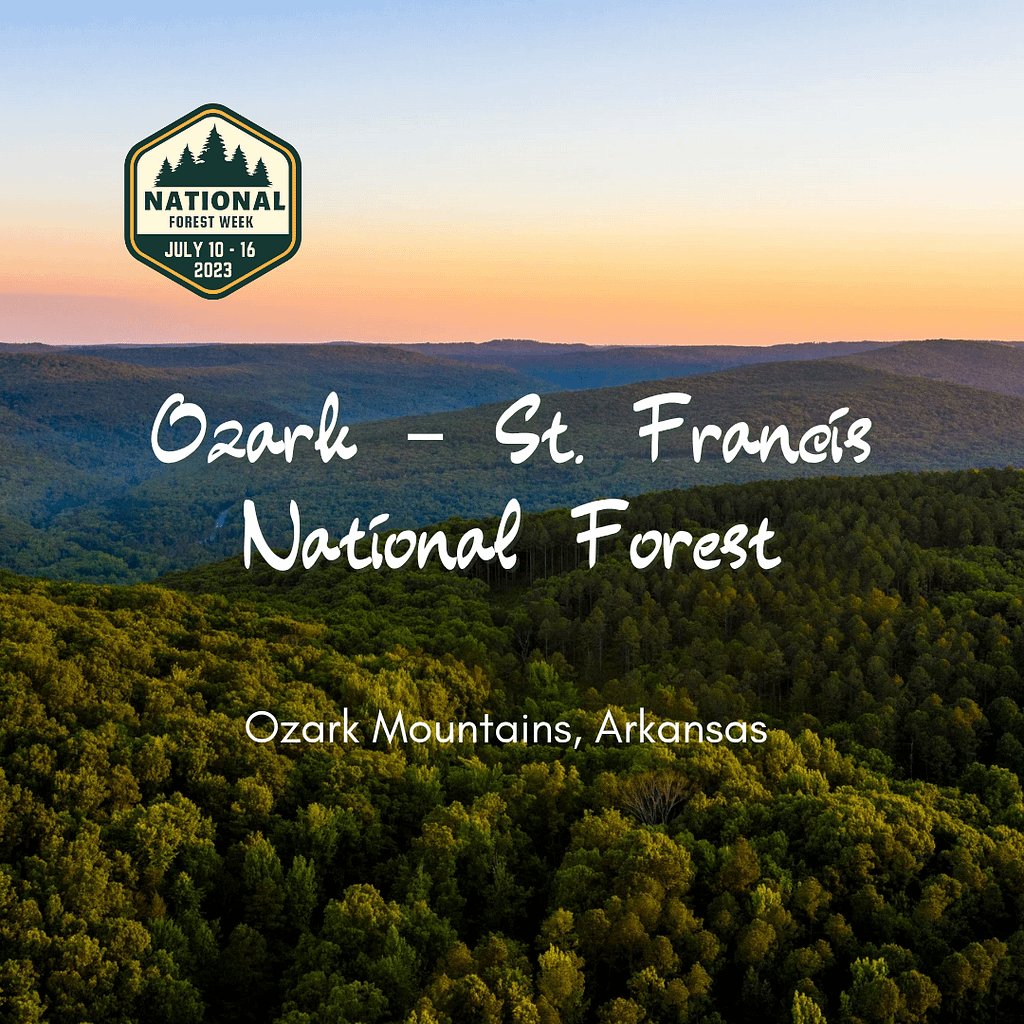
The Ozark – St. Francis National Forest is located in the state of Arkansas, The Natural State. The two forests are situated on opposite sides of the state. The Ozark National Forest is mostly in the north central part of the state within the confines of the Ozark Mountains. The St. Francis National Forest lies in the eastern part of the state along the banks of the Mississippi River. Both forests are maintained by the National Forest Service out of Russellville.
Ozark – St. Francis National Forest History
The U.S. government established the Ozark National Forest in 1908 to protect the heavily logged and eroded lands of the Ozark Mountains. As timber companies cleared vast sections of the forest in the late 19th and early 20th centuries, soil erosion and water quality issues worsened. In response, federal officials used the Weeks Act to acquire land, replant trees, and restore the damaged landscape. Over time, workers built roads, trails, and fire towers to manage and protect the forest, gradually transforming it into a thriving ecosystem. Eventually, the Ozark National Forest became a hub for conservation, recreation, and sustainable forestry, preserving the region’s rugged beauty for future generations.
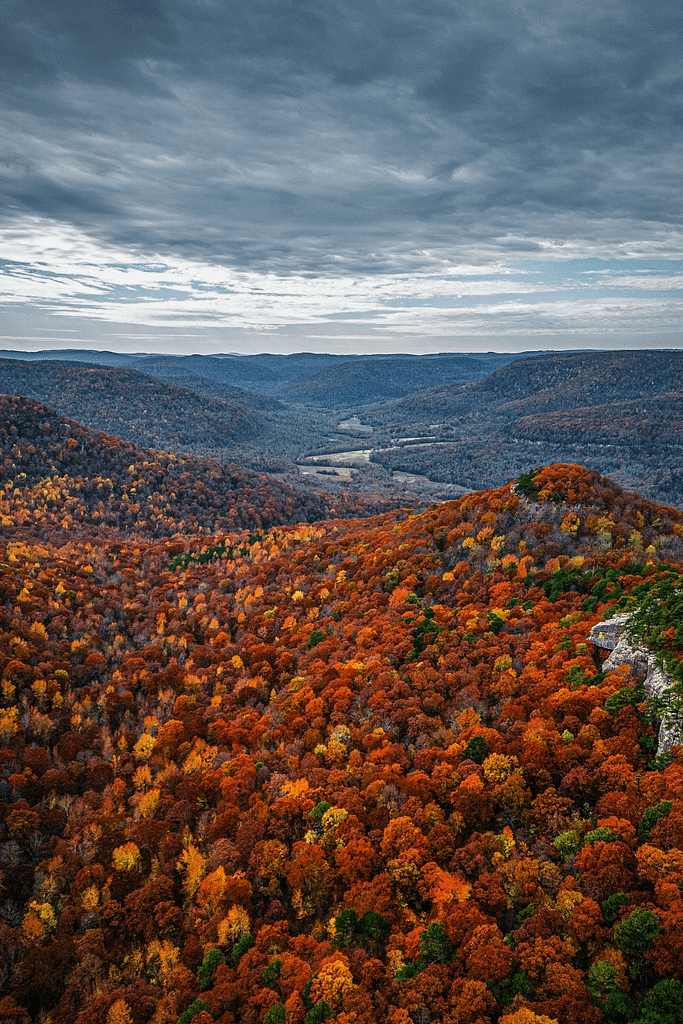
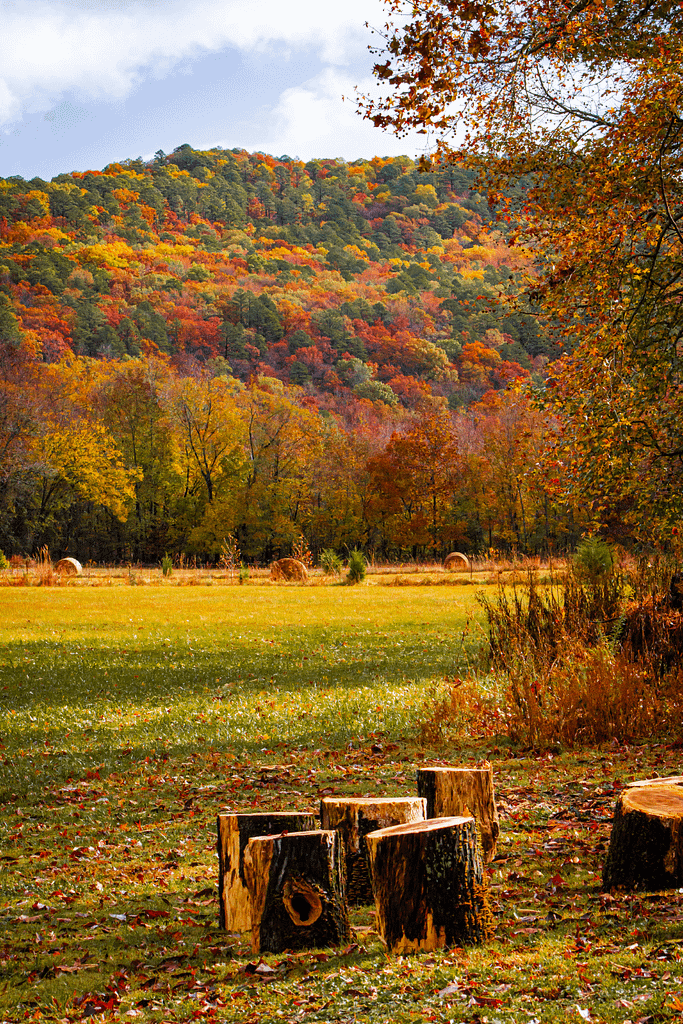
Decades later, in 1960, the government created the St. Francis National Forest to safeguard the rich bottomland hardwoods and wetlands of eastern Arkansas. Unlike the mountainous Ozark region, this area consisted of low-lying floodplains along the Mississippi River, where diverse plant and animal life thrived. Recognizing its ecological importance, conservationists pushed for its protection, ensuring the survival of bald cypress, oak, and other wetland species. Since then, the St. Francis National Forest has provided a haven for wildlife, while also supporting outdoor activities like hunting, fishing, and hiking. Together, the Ozark and St. Francis National Forests form a diverse and vital landscape, balancing preservation with public use and enjoyment.
Ozark National Forest
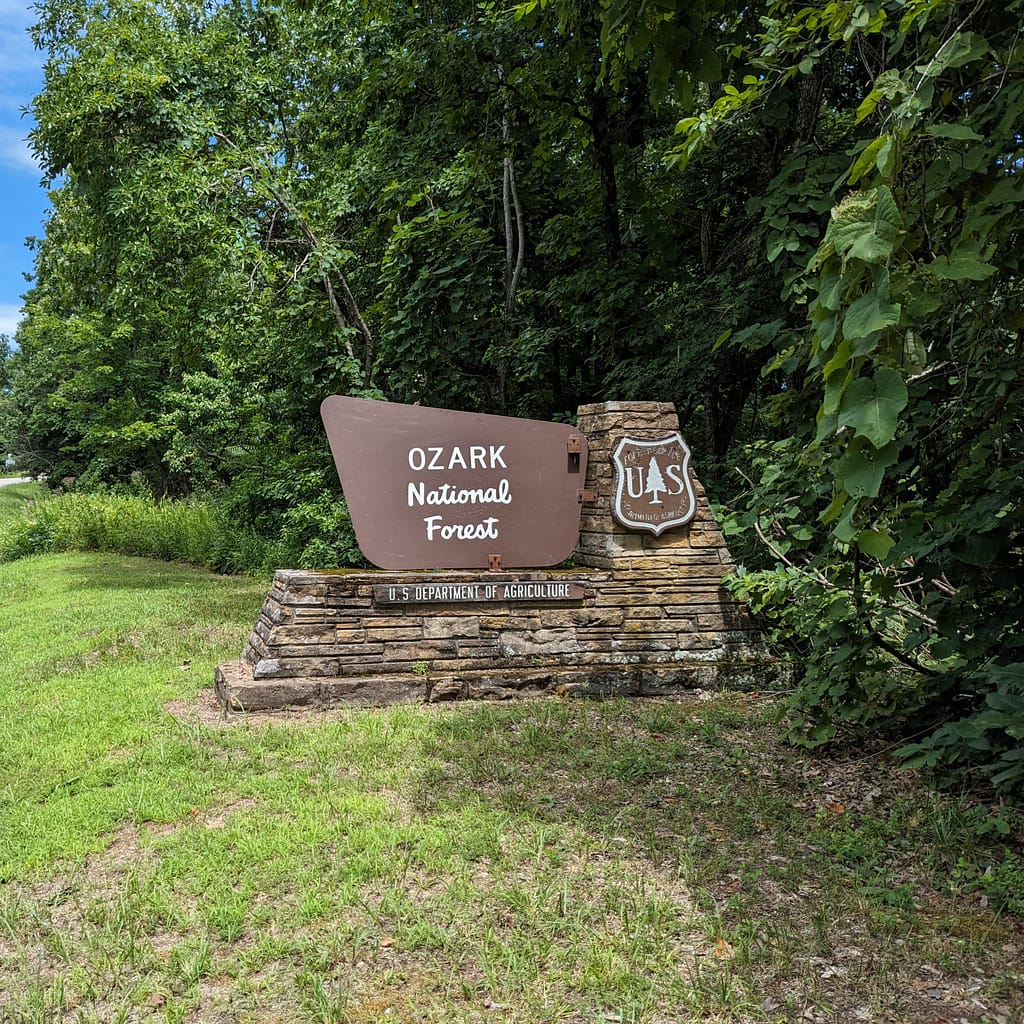
The Ozark National Forest stands out for its rugged terrain and breathtaking highlands, which include some of the tallest elevations in Arkansas. Nestled in the Boston Mountains, the forest features steep ridges, deep valleys, and rocky outcrops that create a dramatic landscape. White Rock Mountain and Hare Mountain rise prominently within the forest, offering stunning panoramic views of the surrounding wilderness. Although Mount Magazine, the highest peak in the state at 2,753 feet, sits just outside the forest, the high elevations within the Ozark National Forest still provide an awe-inspiring experience. As visitors explore these heights, they encounter a mix of rocky bluffs and dense woodlands, showcasing the region’s diverse and untamed beauty.
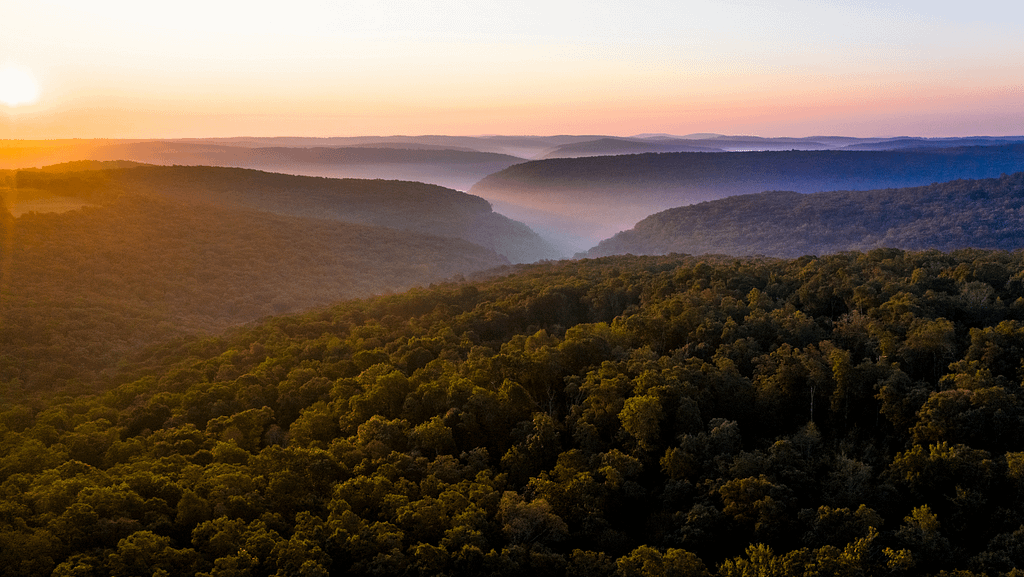
In addition to its striking elevation changes, the Ozark National Forest boasts a remarkable variety of tree species that contribute to its vibrant ecosystems. Oak and hickory dominate much of the forest, with white oak, red oak, and post oak providing essential food and shelter for wildlife. Meanwhile, towering sycamores, sweetgums, and maples thrive along riverbanks, adding to the forest’s diversity. In the higher and drier regions, shortleaf pine stands tall, contrasting with the surrounding hardwoods. As the seasons change, these trees create a spectacular display of colors, with bright greens in spring, deep reds and oranges in fall, and bare, frosty branches in winter.
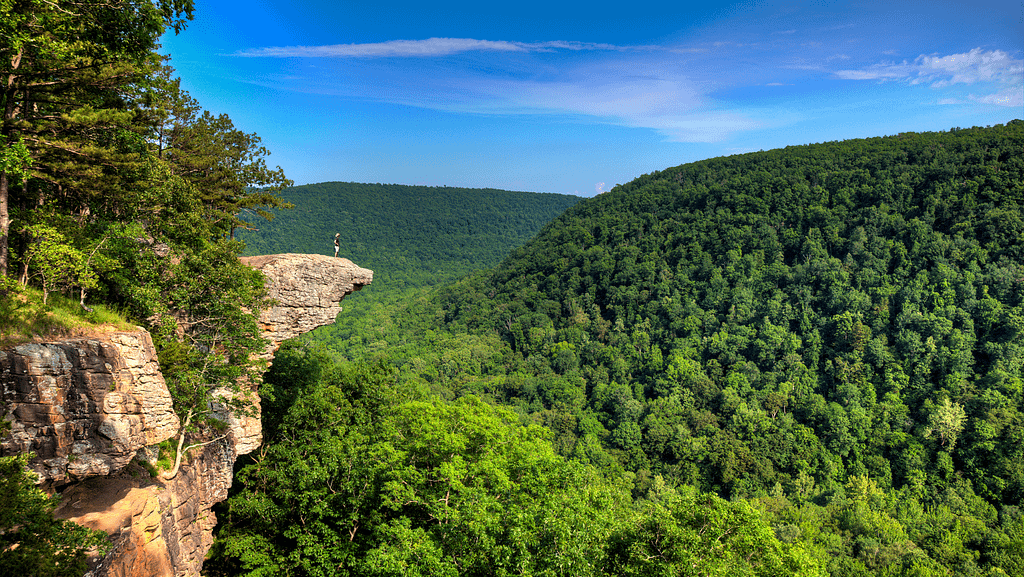
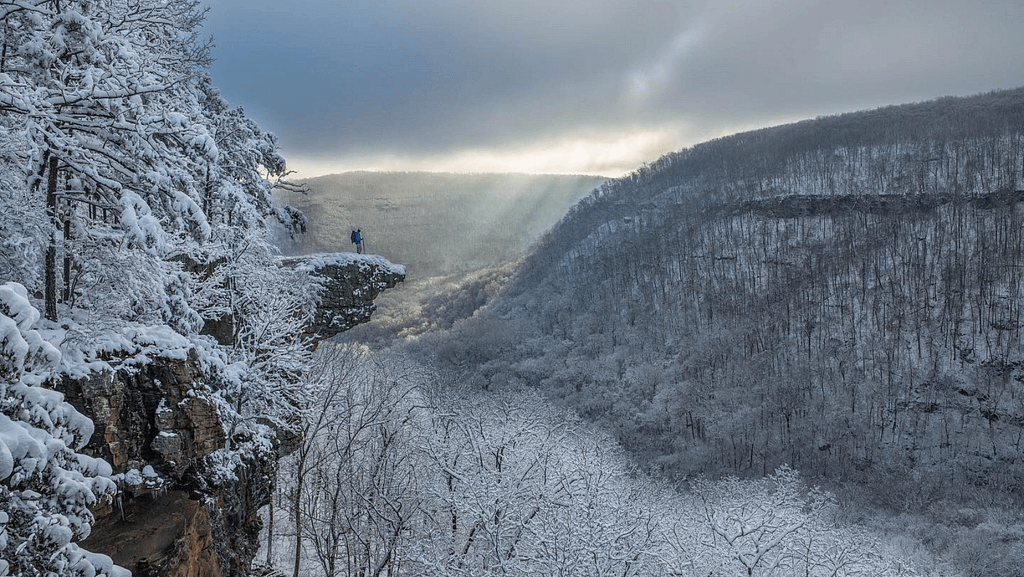
Wilderness Areas
The Ozark National Forest in boasts five captivating wilderness areas that offer a remote escape into nature. Firstly, the East Fork Wilderness Area, tucked in the northern reaches, entices adventurers with its rugged terrain and secluded trails. Next, the Hurricane Creek Wilderness Area, located southwest, enchants visitors with its meandering creek and dense forests. Meanwhile, the Leatherwood Wilderness Area, nestled in the central region, showcases dramatic cliffs and serene valleys. Changing to the northeast part of the forest, the Richland Creek Wilderness Area dazzles with its clear, cascading waters and lush landscapes. Lastly, the Upper Buffalo Wilderness Area, situated northwest, offers breathtaking vistas and tranquil solitude, perfect for those seeking an immersive wilderness experience. Each area provides unique challenges and rewards, making the Ozark National Forest a treasure trove for outdoor enthusiasts.
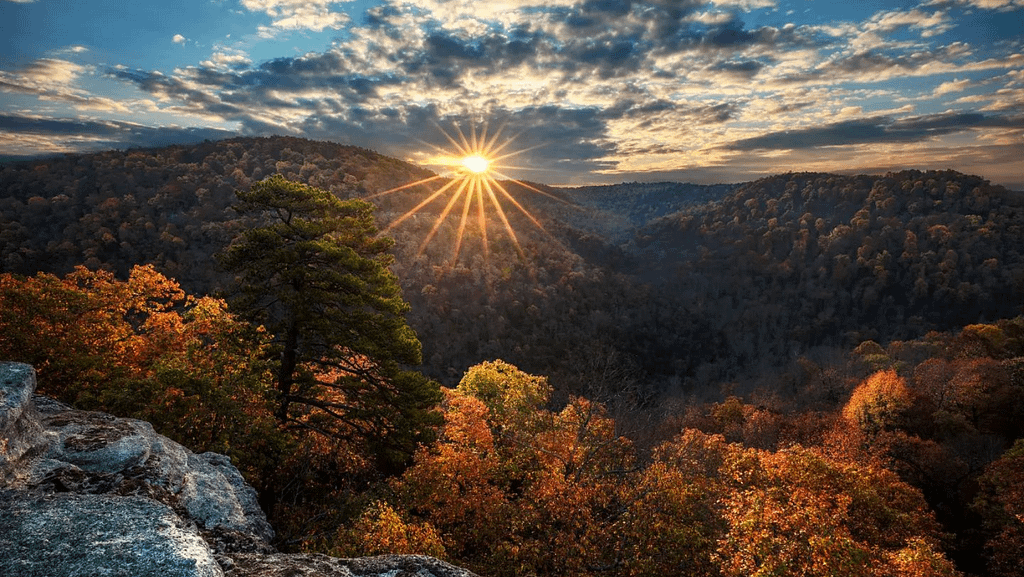
Outdoor Activities
Beyond its towering trees and rugged peaks, the Ozark National Forest offers countless opportunities for outdoor adventure. Hikers trek through dense woodlands, climb rocky bluffs, and follow winding trails that lead to breathtaking overlooks. Wildlife enthusiasts spot deer, black bears, and a variety of bird species as they explore the diverse terrain. Whether visitors seek challenging mountain trails or peaceful wooded retreats, the Ozark National Forest delivers a one-of-a-kind experience that highlights the natural beauty of Arkansas.
Beneath the forested hills, an extensive network of caves adds to the mystery and allure of the Ozark National Forest. Limestone formations, shaped by centuries of erosion, have carved out hidden caverns, some of which shelter rare wildlife like the Ozark blind cavefish and endangered bats. Adventurers explore well-known caves such as Blanchard Springs Caverns, where underground rivers and stunning rock formations create a mesmerizing landscape. Many smaller caves, tucked away in the forest’s wilderness areas, offer experienced spelunkers a chance to discover untouched underground worlds. These caves provide not only a glimpse into the region’s geological history but also a refuge for wildlife seeking shelter in the cool, dark recesses.
The Buffalo National River, one of the last free-flowing rivers in the country, winds through the forest, offering crystal-clear waters perfect for paddling and fishing. Richland Creek, Big Piney Creek, and the Mulberry River rush through deep gorges, creating waterfalls and rapids that attract kayakers and hikers alike. These waterways sustain diverse plant and animal life, from towering sycamores lining the banks to river otters playing in the current. Whether floating down a river, hiking along a cascading stream, or simply enjoying the sound of rushing water, visitors to the Ozark National Forest experience a landscape shaped by time, water, and nature’s relentless force.
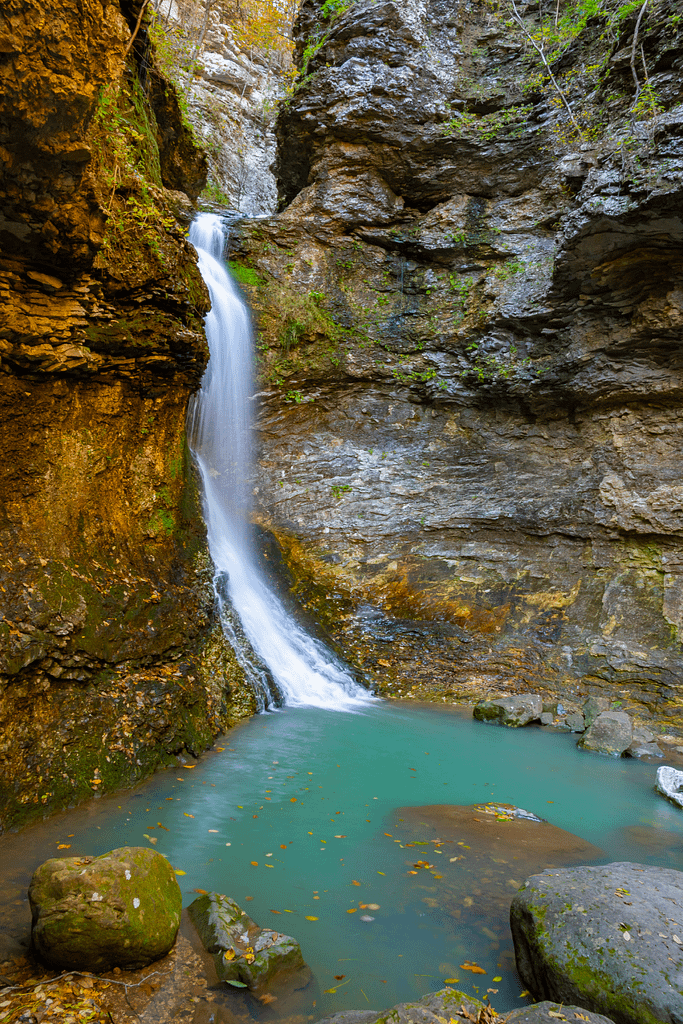
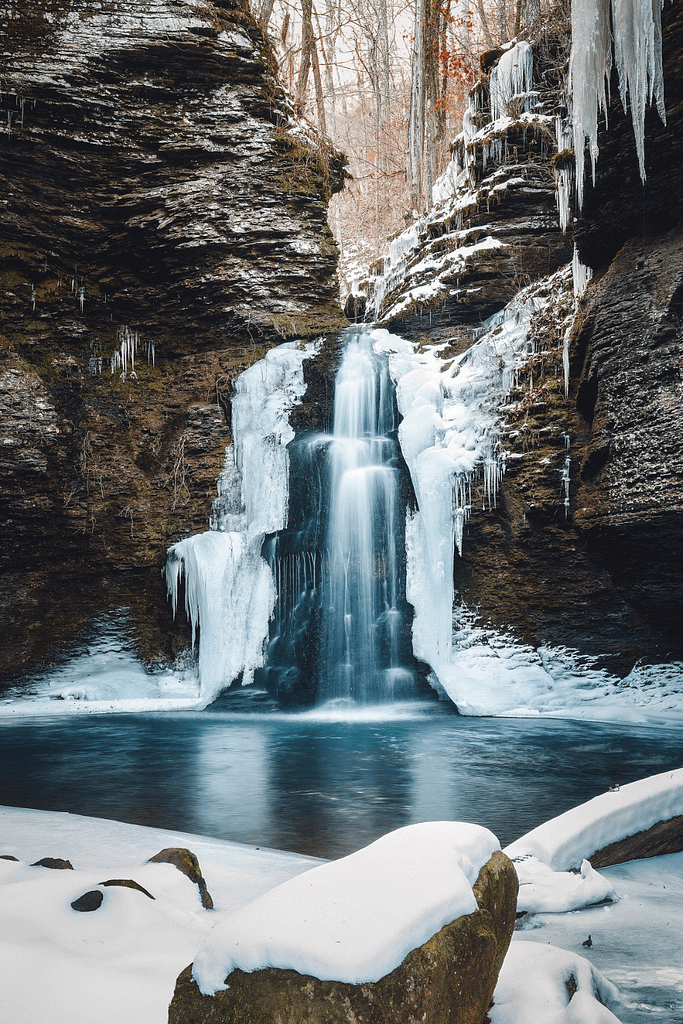
St. Francis National Forest
The St. Francis National Forest sits in eastern Arkansas along the Mississippi River, making it one of the few national forests located in a delta environment. Although it covers just over 22,000 acres, this small yet ecologically rich forest protects a diverse landscape of bottomland hardwoods and wetlands. Towering oaks and hickories dominate much of the forest, while bald cypress and tupelo trees thrive in the swampy, low-lying areas. Additionally, cottonwoods and sycamores grow along riverbanks, providing essential habitat for countless bird species. Because of its location in the fertile Mississippi Alluvial Plain, the St. Francis National Forest supports a wide range of plant and animal life, making it a vital conservation area.
The St. Francis National Forest offers a variety of outdoor activities that attract visitors year-round. Anglers fish in Bear Creek Lake and Storm Creek Lake, where bass, crappie, and catfish flourish in the calm waters. Meanwhile, hikers and birdwatchers explore scenic trails, keeping an eye out for bald eagles and migratory waterfowl. During designated seasons, hunters venture into the forest in search of deer, turkey, and waterfowl. Furthermore, campers enjoy peaceful nights beneath the forest’s towering hardwoods, surrounded by the sounds of nature. Whether fishing, hiking, hunting, or simply appreciating the beauty of the delta landscape, visitors experience the unique and tranquil setting of the St. Francis National Forest.
Ozark – St. Francis National Forest Scenic Byways
The Ozark National Forest in Arkansas offers an enchanting array of five scenic byways that showcase the region’s natural beauty. Firstly, the Ozark Highlands Scenic Byway takes you through dense forests and along ridges, providing spectacular views of the surrounding landscape. Transitioning to the Scenic 7 Byway, you will experience one of the state’s most picturesque routes, winding through the heart of the Ozarks and offering panoramic vistas of mountains and valleys. Additionally, the Mount Magazine Scenic Byway ascends to the highest peak in Arkansas, presenting stunning overlooks and vibrant seasonal foliage along the way.
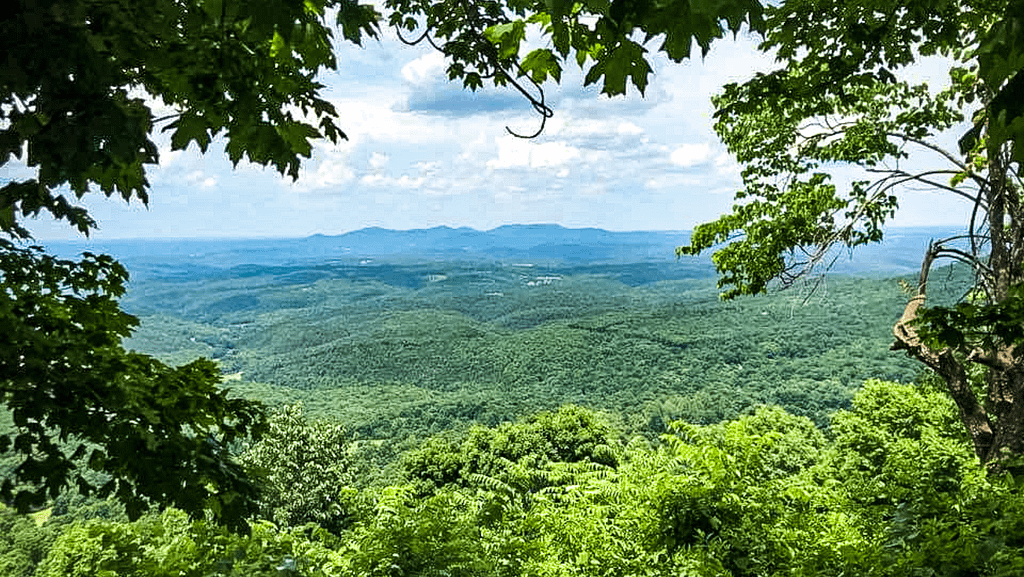
Moving forward, the Pig Trail Scenic Byway offers a thrilling drive with its sharp curves and dramatic scenery, winding through the Boston Mountains and providing a unique perspective of the region’s rugged terrain. Finally, the Sylamore Scenic Byway invites travelers to explore the rich history and diverse ecosystems of the forest. This byway meanders through limestone bluffs, crystal-clear rivers, and dense woodlands, creating a serene and captivating journey. Together, these scenic byways offer a comprehensive and unforgettable exploration of the Ozark National Forest’s diverse landscapes and natural wonders.
The St. Francis National Forest features two scenic byways that immerse travelers in nature’s tranquility. The Great River Road Scenic Byway guides you along the Mississippi River’s historic and picturesque banks. As you drive, you’ll encounter lush forests, vibrant wetlands, and an array of wildlife, enhancing the journey’s appeal. On the other hand, the Crowley’s Ridge Parkway provides a unique and captivating experience, showcasing the geological wonders of Crowley’s Ridge. Transitioning through hardwood forests and along the ridge’s narrow, elevated terrain, this byway offers breathtaking views and a serene atmosphere. Together, these byways provide an unforgettable exploration of the St. Francis National Forest’s natural beauty and diverse ecosystems.
Essential Links
Click on the links below to find out more adventuring in the Ozark – St. Francis National Forest:
The Buffalo River previously mentioned in the article is a post in itself. Experience the natural beauty of the Buffalo National River by following this link. Discover the stunning landscapes and exciting recreational opportunities awaiting you at America’s first national river.
The photos used in this article are taken by very talented photographers. The photos were downloaded from Instagram. Here are the links on Instagram to follow their adventures:
- Sam’s Throne – Joshua Ramsey
- Whitaker Point – Charlton McDaniel
- Leatherwood Wilderness – Carr Ward Photography
- Fuzzy Butt Falls – Brad Sims Photography
This post has been updated to include the latest data from June 2023, ensuring readers receive the most accurate and up-to-date information. Additionally, we’ve refined the language for enhanced clarity and readability.

